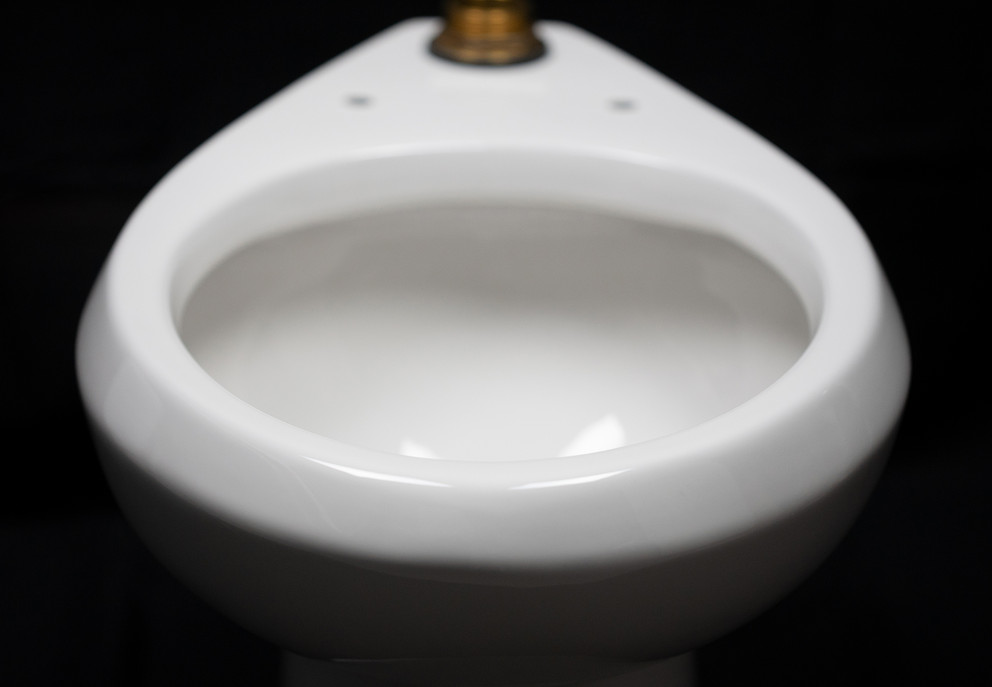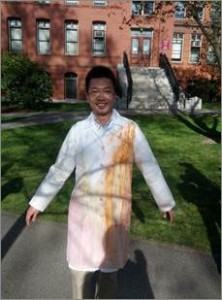On a practical level, it’s becoming clear that we need to become more thoughtful about our use of water. We here in Canada tend to take our water for granted, as if we have an inexhaustible supply. According to this August 21, 2008 CBC (Canadian Broadcasting Corporation) online news item, that’s not the case,
Canada’s stores of fresh water are not as plentiful as once thought, and threaten to pinch the economy and pit provinces against each other, a federal document says.
An internal report drafted last December [2007] by Environment Canada warns that climate change and a growing population will further drain resources.
“We can no longer take our extensive water supplies for granted,” says the report, titled A Federal Perspective on Water Quantity Issues.
The Canadian Press obtained the 21-page draft report under the Access to Information Act.
It suggests the federal government take a more hands-on role in managing the country’s water, which is now largely done by the provinces. Ottawa still manages most of the fresh water in the North through water boards.
The Conservatives promised a national water strategy in last fall’s throne speech but have been criticized since for announcing only piecemeal projects.
The Tories, like the previous Liberal government, are also behind in publishing annual reports required by law that show how water supplies are used and maintained.
The last assessment posted on Environment Canada’s website is from 2005-06.
The internal draft report says the government currently does not know enough about the country’s water to properly manage it.
‘This is not a crisis yet. Why would we expect any government, regardless of political leaning or level, to do anything about it?’
“Canada lacks sound information at a national scale on the major uses and user[s] of water,” it says.
“National forecasting of water availability has never been done because traditionally our use of the resource was thought to be unlimited.”
Canada has a fifth of the world’s supply of fresh water, but only seven per cent of it is renewable. The rest comes from ice-age glaciers and underground aquifers.
One per cent of Canada’s total water supply is renewed each year by precipitation, the report says.
Moreover, government data on the country’s groundwater reserves is deemed “sparse and often inadequate.”
That’s in contrast to the United States, which has spent more than a decade mapping its underground water reserves. Canada shares aquifers with the U.S., and the report says: “Our lack of data places Canada at strategic disadvantage for bilateral negotiations with the U.S.”
…
The most recent update I can find is Ivan Semeniuk’s June 11, 2017 article for the Globe and Mail tilted: Charting Canada’s troubled waters: Where the danger lies for watersheds across the country,
A comprehensive review [World Wildlife Federation: a national assessment of of Canada’s freshwater Watershed Reports; 2017] freshwater ecosystems reveals rising threats from pollution, overuse, invasive species and climate change among other problems. Yet, the biggest threat of all may be a lack of information that hinders effective regulation, Ivan Semeniuk reports. …
Some of that information may be out of date.
Getting back on topic, here’s one possible solution to better managing our use of water.
Toilet coating
A November 18, 2019 news item on phys.org announces research that could save water,
Every day, more than 141 billion liters of water are used solely to flush toilets. With millions of global citizens experiencing water scarcity, what if that amount could be reduced by 50%?
The possibility may exist through research conducted at Penn State, released today (Nov. 18) in Nature Sustainability.
“Our team has developed a robust bio-inspired, liquid, sludge- and bacteria-repellent coating that can essentially make a toilet self-cleaning,” said Tak-Sing Wong, Wormley Early Career Professor of Engineering and associate professor of mechanical engineering and biomedical engineering.
…

A November 18, 2019 Pennsylvania State University news release (also on EurekAlert,) which originated the news item, describes the research in more detail,
In the Wong Laboratory for Nature Inspired Engineering, housed within the Department of Mechanical Engineering and the Materials Research Institute, researchers have developed a method that dramatically reduces the amount of water needed to flush a conventional toilet, which usually requires 6 liters.
Co-developed by Jing Wang, a doctoral graduate from Wong’s lab, the liquid-entrenched smooth surface (LESS) coating is a two-step spray that, among other applications, can be applied to a ceramic toilet bowl. The first spray, created from molecularly grafted polymers, is the initial step in building an extremely smooth and liquid-repellent foundation.
“When it dries, the first spray grows molecules that look like little hairs, with a diameter of about 1,000,000 times thinner than a human’s,” Wang said.
While this first application creates an extremely smooth surface as is, the second spray infuses a thin layer of lubricant around those nanoscopic “hairs” to create a super-slippery surface.
“When we put that coating on a toilet in the lab and dump synthetic fecal matter on it, it (the synthetic fecal matter) just completely slides down and nothing sticks to it (the toilet),” Wang said.
With this novel slippery surface, the toilets can effectively clean residue from inside the bowl and dispose of the waste with only a fraction of the water previously needed. The researchers also predict the coating could last for about 500 flushes in a conventional toilet before a reapplication of the lubricant layer is needed.
While other liquid-infused slippery surfaces can take hours to cure, the LESS two-step coating takes less than five minutes. The researcher’s experiments also found the surface effectively repelled bacteria, particularly ones that spread infectious diseases and unpleasant odors.
If it were widely adopted in the United States, it could direct critical resources toward other important activities, to drought-stricken areas or to regions experiencing chronic water scarcity, said the researchers.
Driven by these humanitarian solutions, the researchers also hope their work can make an impact in the developing world. The technology could be used within waterless toilets, which are used extensively around the world.
“Poop sticking to the toilet is not only unpleasant to users, but it also presents serious health concerns,” Wong said.
However, if a waterless toilet or urinal used the LESS coating, the team predicts these types of fixtures would be more appealing and safer for widespread use.
To address these issues in both the United States and around the world, Wong and his collaborators, Wang, Birgitt Boschitsch, and Nan Sun, all mechanical engineering alumni, began a start-up venture.
With support from the Ben Franklin Technology Partners’ TechCelerator, the National Science Foundation, the Department of Energy, the Office of Naval Research, the Rice Business Plan Competition and Y-Combinator, their company, spotLESS Materials, is already bringing the LESS coating to market.
“Our goal is to bring impactful technology to the market so everyone can benefit,” Wong said. “To maximize the impact of our coating technology, we need to get it out of the lab.”
Looking forward, the team hopes spotLESS Materials will play a role in sustaining the world’s water resources and continue expanding the reach of their technology.
“As a researcher in an academic setting, my goal is to invent things that everyone can benefit from,” Wong said. “As a Penn Stater, I see this culture being amplified through entrepreneurship, and I’m excited to contribute.”
Here’s a link to and a citation for the paper,
Viscoelastic solid-repellent coatings for extreme water saving and global sanitation by Jing Wang, Lin Wang, Nan Sun, Ross Tierney, Hui Li, Margo Corsetti, Leon Williams, Pak Kin Wong & Tak-Sing Wong. Nature Sustainability (2019) DOI: https://doi.org/10.1038/s41893-019-0421-0 Published 18 November 2019
This paper is behind a paywall. However, the researchers have made a brief video available,
There you have it. One random thought, that toilet image reminded me of the controversy over Marcel Duchamp, the Fountain, and who actually submitted a urinal for consideration as a piece of art (Jan. 23, 2019 posting). Hint: Some believe it was Baroness Elsa von Freytag-Loringhoven.
![Inspired by the Nepenthes pitcher plant... [Image credit: New Scientist; Bohn & Federie, PNAS 101, 14138-14143, 2004] Courtesy Wyss Institute](http://www.frogheart.ca/wp-content/uploads/2014/01/PitcherPlant-254x300.jpg)
